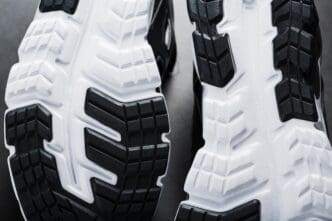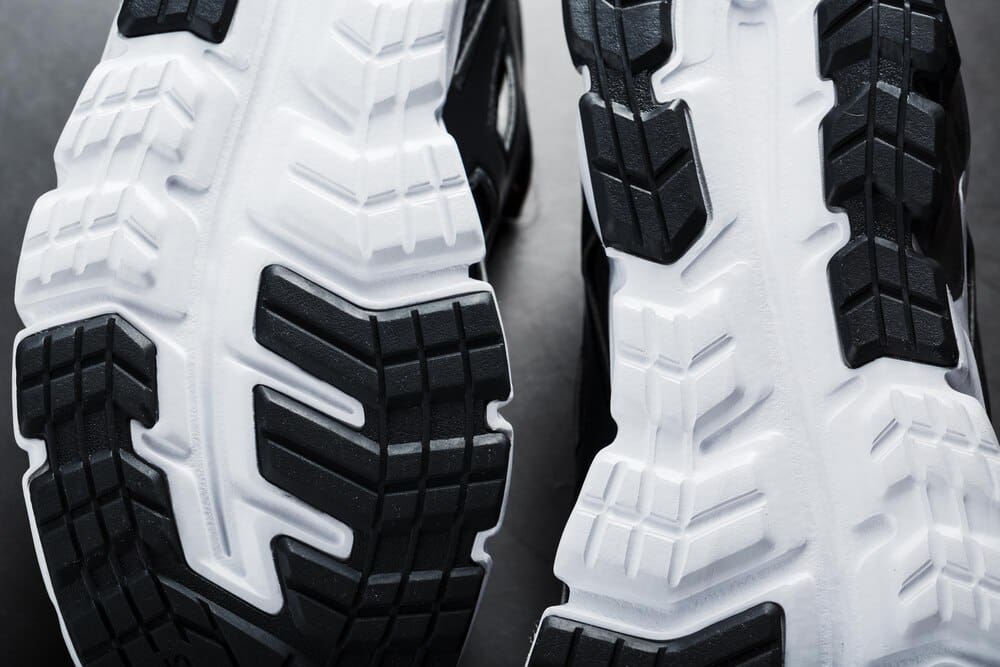Minimalist running shoes, a category of footwear defined by a lack of traditional cushioning, a low or non-existent heel-to-toe height difference, and extreme flexibility, are designed for runners seeking to strengthen their feet and adopt a more natural gait. The core philosophy behind this design is that by stripping away the supportive and corrective features of modern running shoes, the foot can function as it evolved to, promoting a midfoot or forefoot strike rather than a heavy heel landing. While proponents believe this leads to improved running economy and a reduced risk of certain impact-related injuries, these shoes are not for everyone. A successful and safe transition requires a patient, gradual approach, as making the switch too quickly can place unprepared muscles and tendons under immense stress, leading to a high risk of injuries like stress fractures and Achilles tendonitis.
What Exactly Defines a Minimalist Running Shoe?
The term “minimalist” can be confusing, as it exists on a spectrum. However, a few key characteristics consistently define this category of footwear, distinguishing it from both traditional and “maximalist” cushioned shoes. Understanding these features is the first step in deciding if this approach is right for you.
Heel-to-Toe Drop
Perhaps the most critical metric is the heel-to-toe drop, also known as “offset” or “pitch.” This measures the height difference between the material under your heel and the material under your forefoot. A traditional running shoe often has a drop of 8 to 12 millimeters, essentially placing your foot on a slight downward ramp. This design can encourage a runner to land on their heel first.
In contrast, minimalist shoes feature a significantly lower drop, typically ranging from 0 to 4 millimeters. A “zero-drop” shoe, as the name implies, has a completely flat sole, placing the heel and forefoot on the same level, just as they would be if you were standing barefoot. This encourages a landing that is flatter or more toward the front of the foot.
Stack Height
Stack height refers to the total amount of shoe material between your foot and the ground. It is the combination of the outsole (the rubber that touches the ground), the midsole (the foam cushioning), and the insole. Traditional shoes can have stack heights of 25mm or more, providing significant cushioning.
Minimalist shoes have a very low stack height, providing just enough material to protect the sole of the foot from punctures and abrasions without dulling the sensation of the ground. This low profile is fundamental to the minimalist philosophy of enhancing ground-feel.
Flexibility and Weight
A hallmark of a minimalist shoe is its extreme flexibility. You should be able to easily bend it, twist it, and even roll it up into a ball. This freedom of movement allows the 33 joints and dozens of muscles and ligaments in your foot to move and flex naturally, without being restricted by a rigid sole.
They are also incredibly lightweight. By eliminating heavy foam, plastic shanks, and supportive overlays, minimalist shoes remove as much mass as possible. This not only makes them feel less cumbersome but can also contribute to a runner feeling quicker and more agile.
The Science and Philosophy Behind the Movement
The modern minimalist running movement was largely ignited by Christopher McDougall’s 2009 bestseller, Born to Run. The book chronicled the Tarahumara people of Mexico’s Copper Canyons, a tribe renowned for running incredible distances in thin, simple sandals without the litany of injuries common in the developed world. This sparked a widespread re-evaluation of the highly cushioned, motion-controlled running shoe that had dominated the market for decades.
Proprioception: The Body’s Sixth Sense
Proprioception is your body’s ability to sense its position, movement, and orientation in space. Your feet are packed with nerve endings that provide your brain with rich feedback about the texture, angle, and stability of the surface you are on. Thick, cushioned shoes can dull this feedback, almost like trying to type with thick gloves on.
Minimalist shoes, with their thin soles, enhance proprioception. This improved ground-feel allows your brain to make faster, more precise adjustments to your stride, improving balance and stability. Your body can better react to uneven terrain, potentially reducing the risk of a twisted ankle or a fall.
Natural Gait and Foot Strike
The structure of a traditional shoe, particularly its high, cushioned heel, can make a heel-striking gait feel natural. When you land heavily on your heel with your leg extended out in front of your body, it creates a significant braking force and sends a shockwave up your leg to the knee and hip.
By removing that heel elevation, minimalist shoes make a heavy heel strike feel awkward and uncomfortable. Instead, runners naturally shorten their stride, increase their cadence (the number of steps per minute), and land more on the midfoot or forefoot. This landing pattern keeps the foot closer to the body’s center of mass, which many biomechanical experts believe is a more efficient and lower-impact way to run.
Strengthening the Foot’s Intrinsic Muscles
Your foot has its own natural shock-absorbing and support system in its arches, which are supported by a web of intrinsic muscles. Overly supportive and rigid shoes can act like a cast, causing these muscles to weaken over time because they are not required to do their job.
Running in minimalist shoes forces these muscles to engage and work. Over time, this can lead to stronger, more resilient feet that are better able to support themselves and absorb impact without relying on external cushioning and support.
Understanding the Risks and How to Mitigate Them
While the benefits are compelling, the risks associated with minimalist running are significant and must be respected. Nearly all injuries related to this style of running stem from a single error: transitioning too quickly. Your body’s tissues—bones, muscles, and tendons—need time to adapt to the new stresses.
The Danger of “Too Much, Too Soon”
When you switch from a cushioned shoe to a minimalist one, you fundamentally change the loads on your body. The forces that were once absorbed by foam cushioning are now handled by your Achilles tendon, calf muscles, and the bones and tissues of your feet. If these structures are not conditioned for this new load, they can easily become overloaded and injured.
Common Injuries
The most common injuries from a rushed transition include metatarsal stress fractures (from the increased impact on the forefoot), Achilles tendonitis (as the tendon is put under greater stretch and load), and severe calf strains. Plantar fasciitis, an inflammation of the tissue on the bottom of the foot, can also be triggered if the arch-supporting muscles are not yet strong enough to handle the workload.
Your Step-by-Step Guide to a Safe Transition
A safe transition from traditional to minimalist shoes is a process that should be measured in months, not weeks. Patience is the single most important factor for success.
Step 1: Start by Walking
Before you even think about running, buy a pair of minimalist shoes and wear them for daily activities. Start with an hour or two around the house, then gradually build up to wearing them for errands, walks, or a full day at a standing desk. Do this for at least one to two weeks to allow the small muscles in your feet to acclimate.
Step 2: The 10 Percent Introduction
Once you are comfortable walking, it’s time to run, but only for a tiny fraction of your total volume. At the end of one of your regular, shorter runs, change into your minimalist shoes and run for just a few hundred meters on a soft, forgiving surface like a grassy field or a rubberized track. A good rule is to start with no more than 10% of the distance of your shortest weekly run.
Step 3: Listen Intently to Your Body
Pay close attention to any new aches or pains, particularly in your arches, calves, and Achilles tendons. It is normal to feel some muscle soreness (Delayed Onset Muscle Soreness or DOMS), as you are using muscles in a new way. However, you must learn to distinguish this from sharp, localized, or persistent pain, which is a signal to stop and rest.
Step 4: Increase Volume Methodically
If you feel good after your first few minimalist sessions, you can begin to slowly increase the distance. Do not increase your minimalist running distance by more than 10% per week. This slow, methodical progression gives your tissues the time they need to adapt and strengthen. If you feel any warning signs of injury, take a few days off and reduce your minimalist volume at your next session.
Step 5: Focus on Your Form
Use this transition as an opportunity to improve your running mechanics. Think about running “lightly” and “quietly.” Focus on taking shorter, quicker steps (increasing your cadence) and landing with your foot underneath your hips, not out in front of you. This will naturally encourage a midfoot strike and reduce braking forces.
Conclusion: A Tool, Not a Panacea
Minimalist running shoes are neither a magic bullet that will instantly cure all running ailments nor are they an inherently dangerous fad. They are a tool. For the right runner—one who is patient, dedicated to improving their form, and willing to undergo a slow, intelligent transition—they can be a powerful instrument for building stronger feet and developing a more natural, connected running experience. For the impatient runner, however, they can be a fast track to the sidelines. The ultimate goal is a long, healthy, and enjoyable running journey, and whether minimalist shoes have a place in that journey depends entirely on the individual’s approach.







